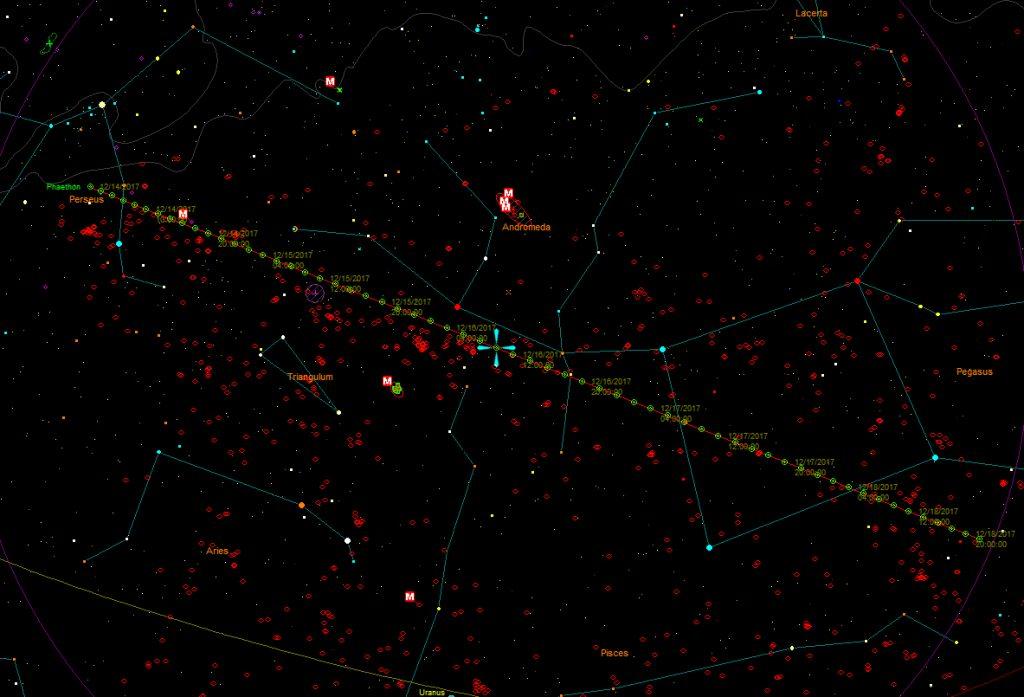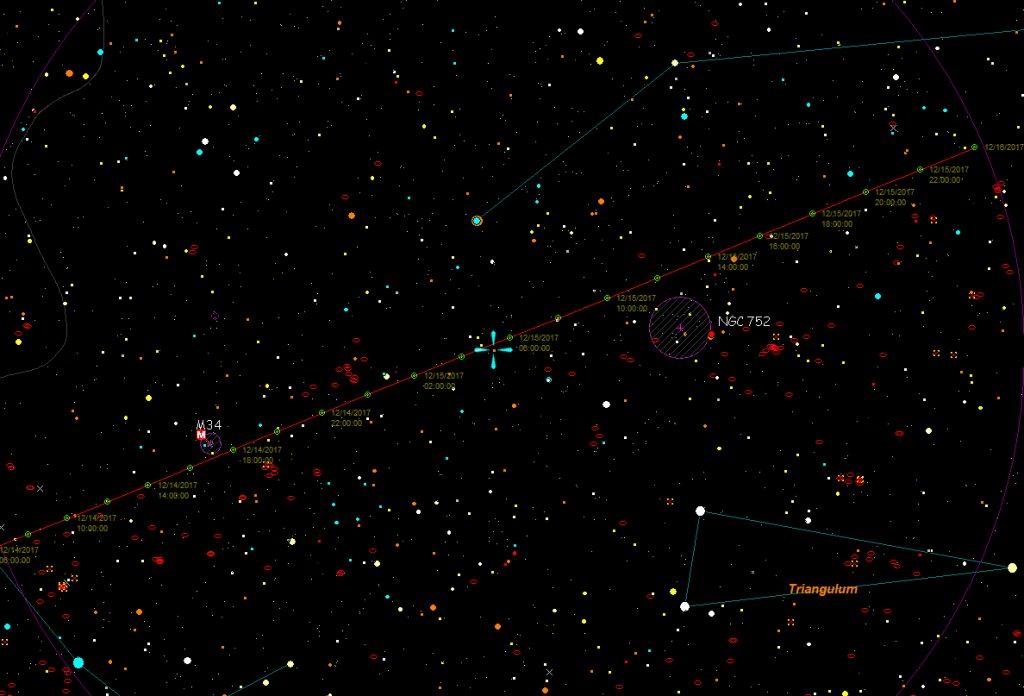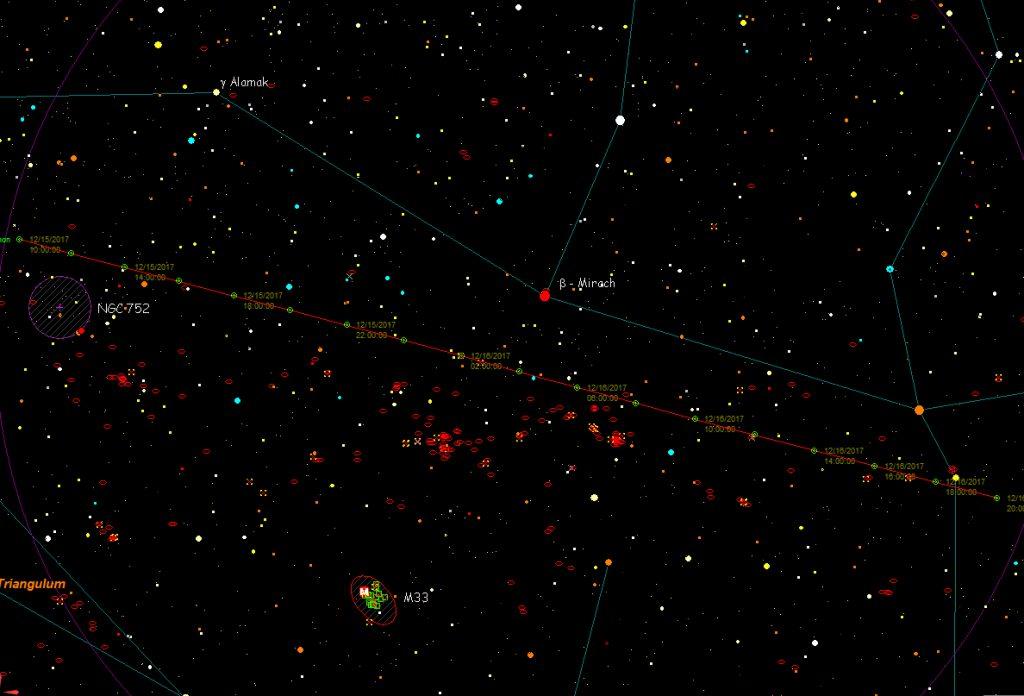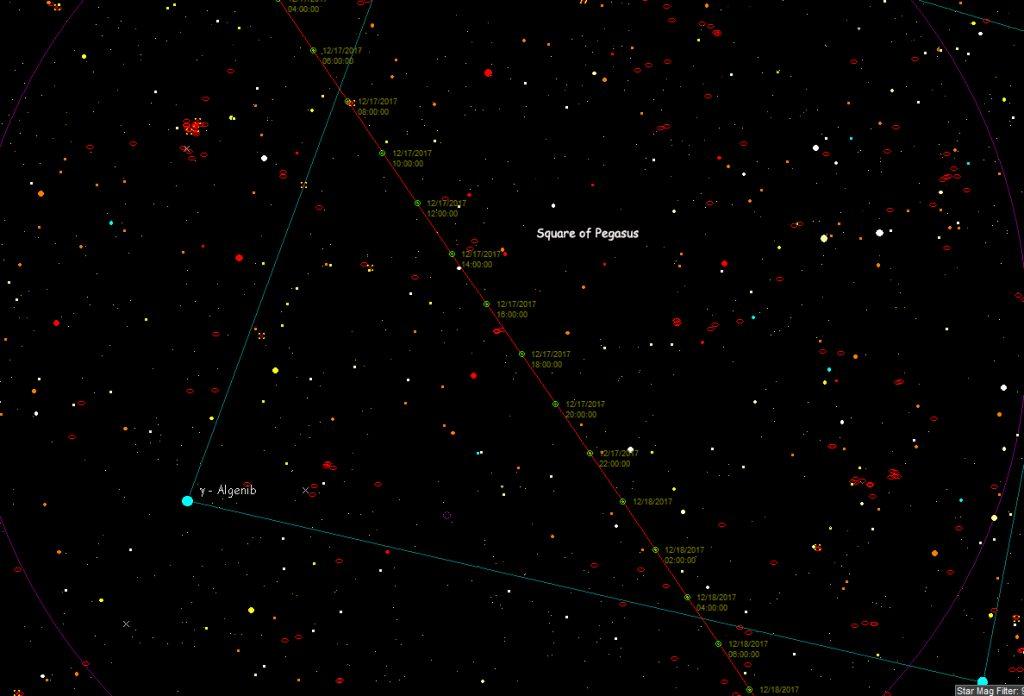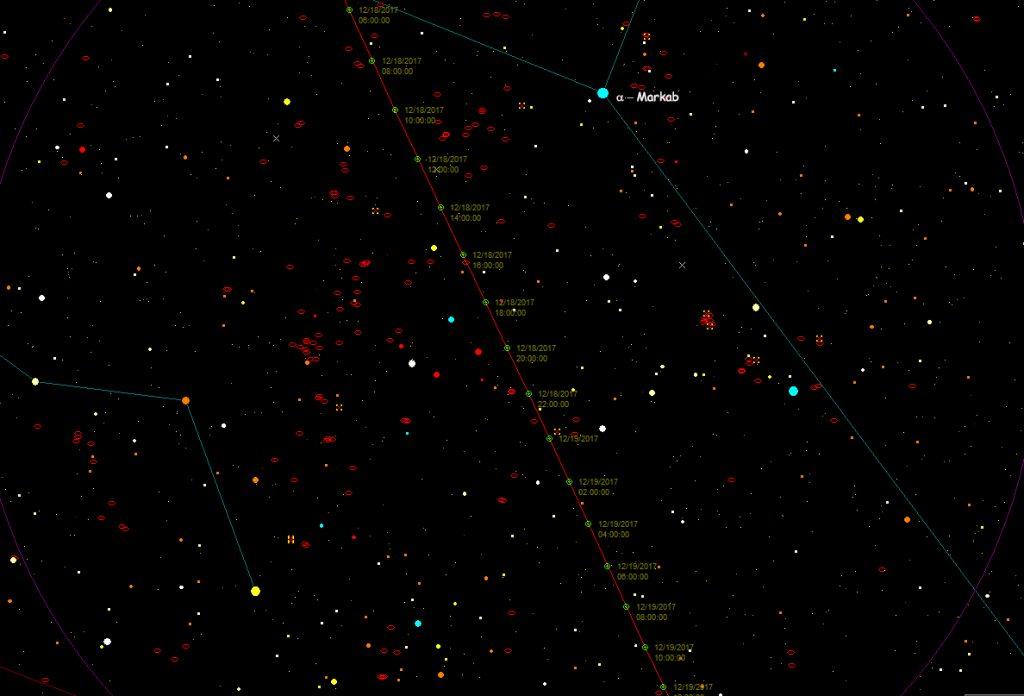Next week sees the maximum of the Geminid meteors. This fairly active shower is one of the richest showers of the year.
This shower is active from the 8th and goes on until the 17th of December.
Maximum activity occurs on the 14th at 02:00hrs.
It has a predicted Zenithal Hourly Rate (ZHR) of 100 meteors per hour.
Don’t forget though, you are very unlikely to see quite that amount of meteors per hour.
But it should put on a great show.
Observing conditions for the meteors themselves are extremely favourable.
The Moon is just approaching New, so will be well out of the way and will not interfere with observing.
It rises as a very thin crescent, which should also have strong Earthshine, rising after 4am in the ESE sky, so should be worth waiting up for if you have a clear horizon.
Most meteor showers are produced by the Earth moving through debris left in the orbits of comet, where the Earths and comets orbits intersect.
The BAA are even suggesting imagers webcam the Moon regularly during the shower to see if any lunar impacts from these meteors can be detected by amateurs on the side of the Moon in shadow.
With the Geminids, the parent body, known as 3200 Phaethon, is classified as an asteroid.
(I think that the boundaries between what is classed as an asteroid and a comet are going to get even more seriously muddled as we explore more of these minor solar system bodies).
Phaethon is an Apollo-type asteroid. It’s orbit reaches aphelion (furthest point from the Sun) well out beyond Mars (223 million miles), reaching perihelion (Closest point to the Sun) well inside Mercury’s orbit (13 million miles).
During the meteor shower, Phaethon makes one of its close passes to the Earth on the 16th of December.
It will reach at least magnitude 12, so should be visible and will be well placed for observing from the UK.
This map Generated using the free C2A Planetarium Software shows the full path of the asteroid, moving left to right from the 14th to the 18th of the month.
It passes from Perseus into Andromeda and onto Pegasus over this time.
More detailed maps are shown below.
Click on the maps for bigger versions.
On the 14th – 15th, the asteroid passes just below the open cluster M34 as it moves from Perseus towards Andromeda.
It passes just above NGC 752 in daylight hours on the 15th.
After dark on the evening of the 15th, it is approaching Beta Andromedae (Mirach), which it passes due south of in the early hours of the 16th.
During daylight hours the asteroid moves towards the constellation of Pegasus.
As dark falls on the 16th Phaephon is moving below Delta Andromedae, and doesn’t quite reach The Square of Pegasus before daylight hits.
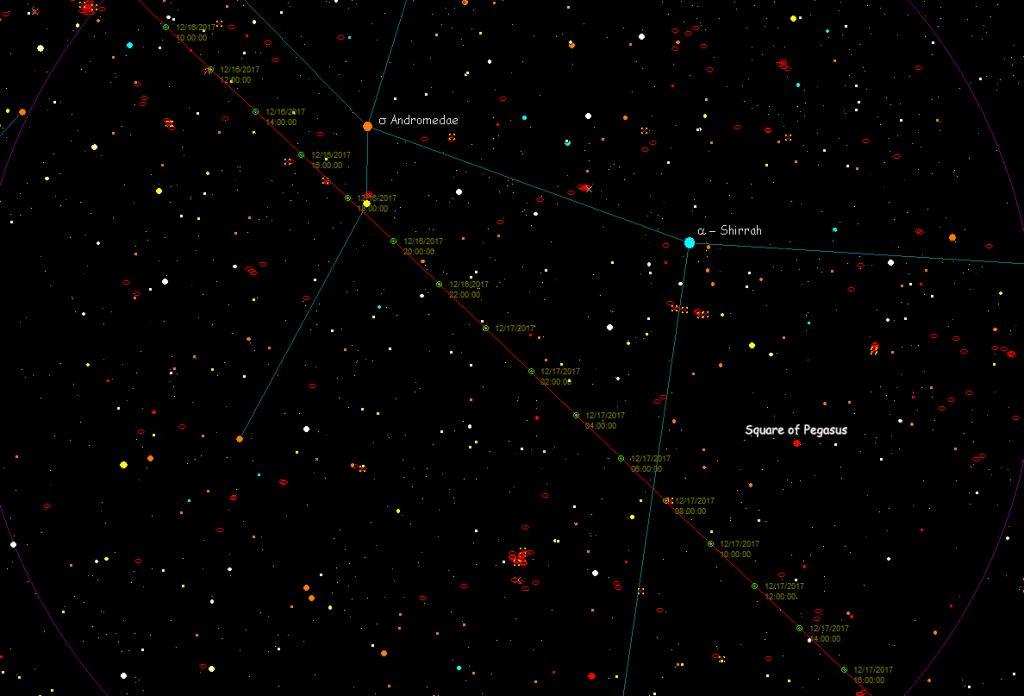
When darkness falls on the 17th of December, Phaephon is now well into the southern part of The Square of Pegasus.
Daylight hits once again before it starts to move out.
On the evening of the 18th, Phaephon is slowing down and fading as it moves southwards, its path running almost parallel to the Flying Horses neck.
Have fun hunting down this asteroid.
Let me know how you get on.

